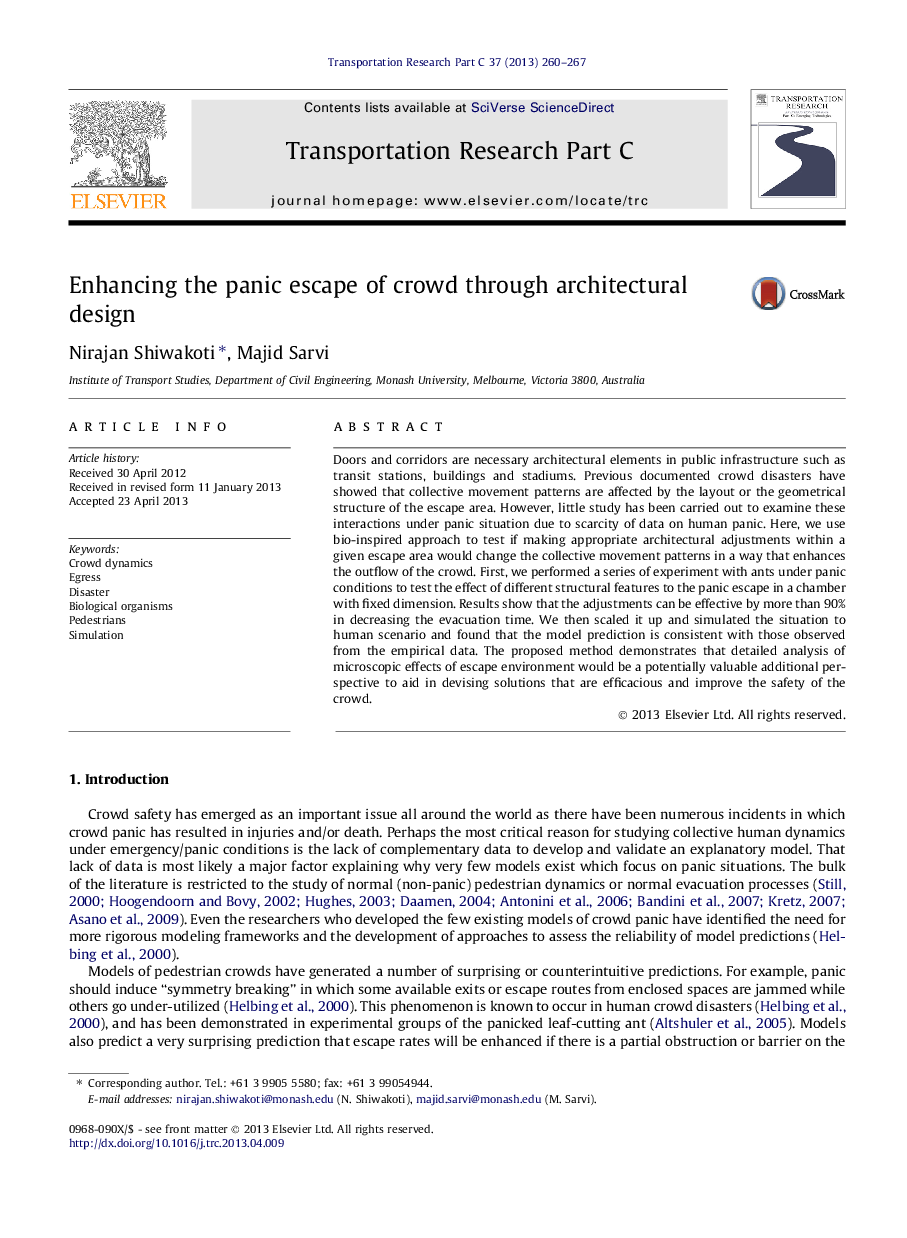| Article ID | Journal | Published Year | Pages | File Type |
|---|---|---|---|---|
| 525347 | Transportation Research Part C: Emerging Technologies | 2013 | 8 Pages |
•Effects of escape area layout in panic escape is examined through ants experiment.•Adjustments of layout resulted more than 90% reduction in evacuation time.•The results were consistent when scaled up and simulated for humans crowd scenario.•This can have implications for developing design solutions for crowd safety.
Doors and corridors are necessary architectural elements in public infrastructure such as transit stations, buildings and stadiums. Previous documented crowd disasters have showed that collective movement patterns are affected by the layout or the geometrical structure of the escape area. However, little study has been carried out to examine these interactions under panic situation due to scarcity of data on human panic. Here, we use bio-inspired approach to test if making appropriate architectural adjustments within a given escape area would change the collective movement patterns in a way that enhances the outflow of the crowd. First, we performed a series of experiment with ants under panic conditions to test the effect of different structural features to the panic escape in a chamber with fixed dimension. Results show that the adjustments can be effective by more than 90% in decreasing the evacuation time. We then scaled it up and simulated the situation to human scenario and found that the model prediction is consistent with those observed from the empirical data. The proposed method demonstrates that detailed analysis of microscopic effects of escape environment would be a potentially valuable additional perspective to aid in devising solutions that are efficacious and improve the safety of the crowd.
